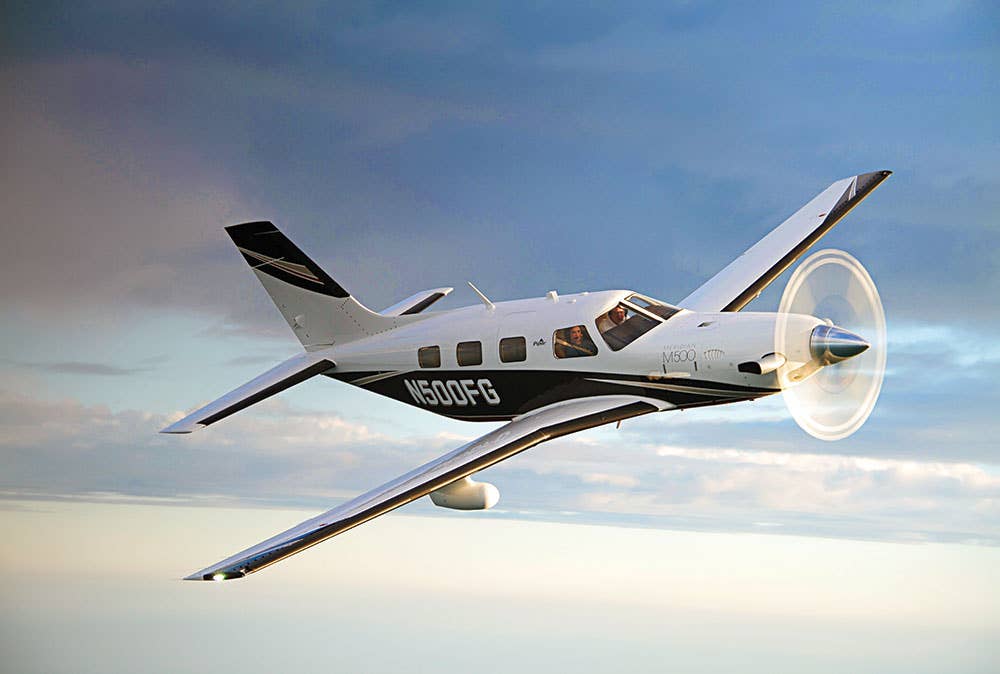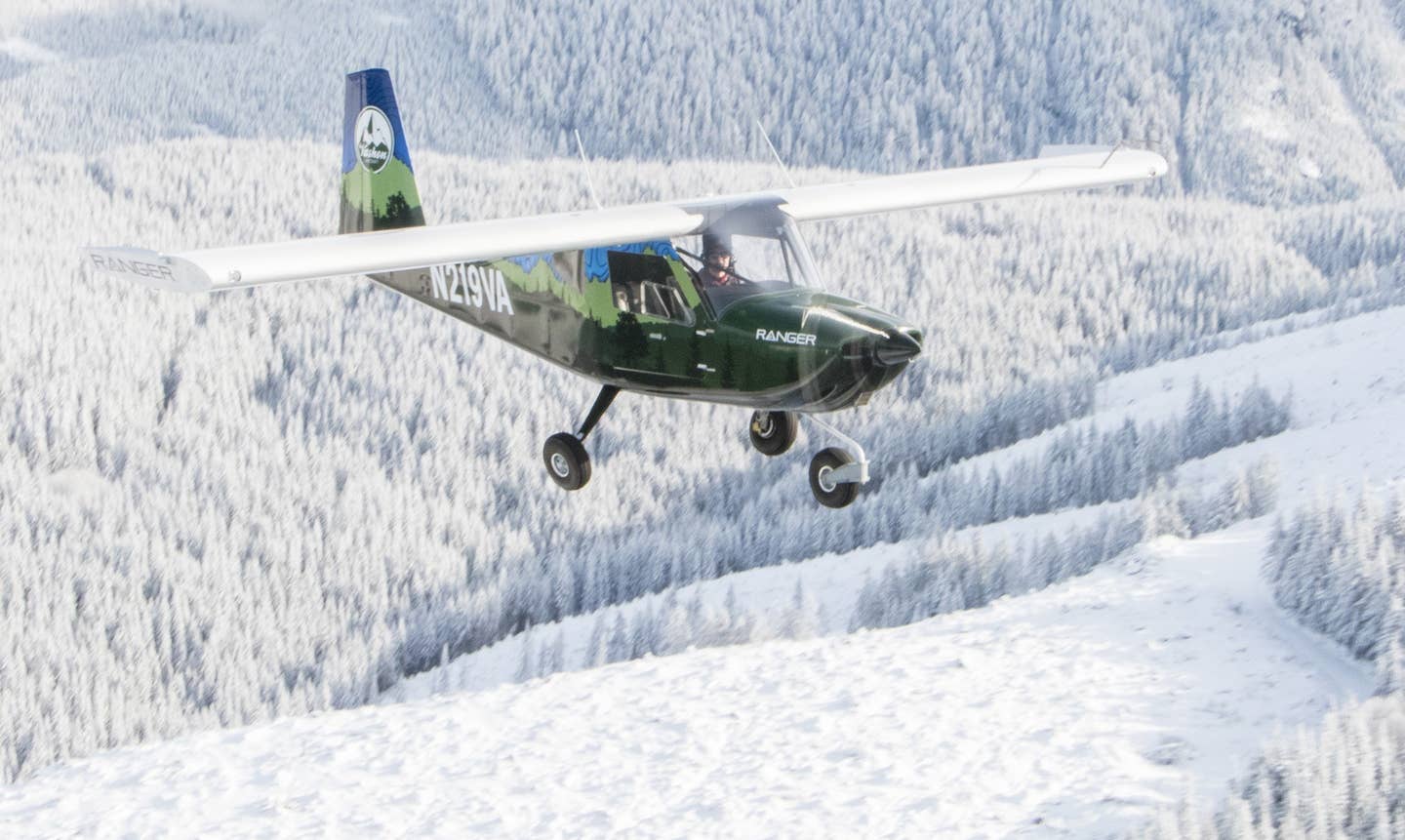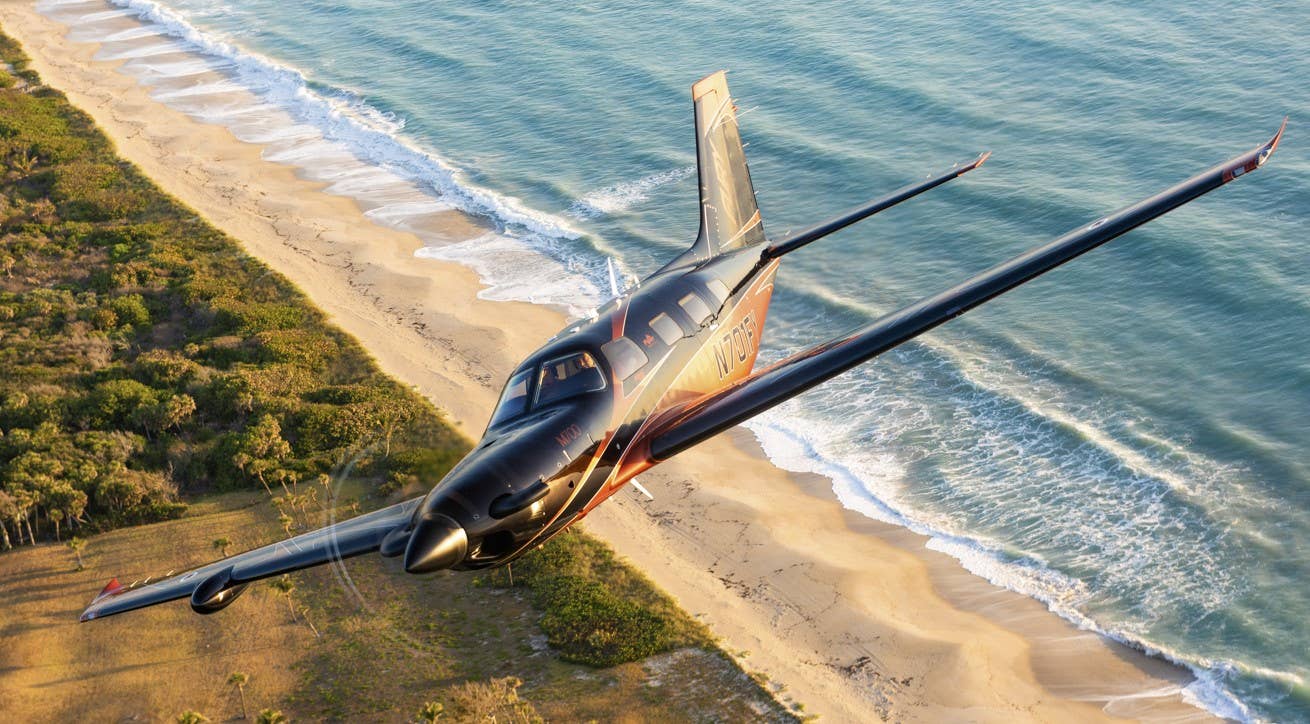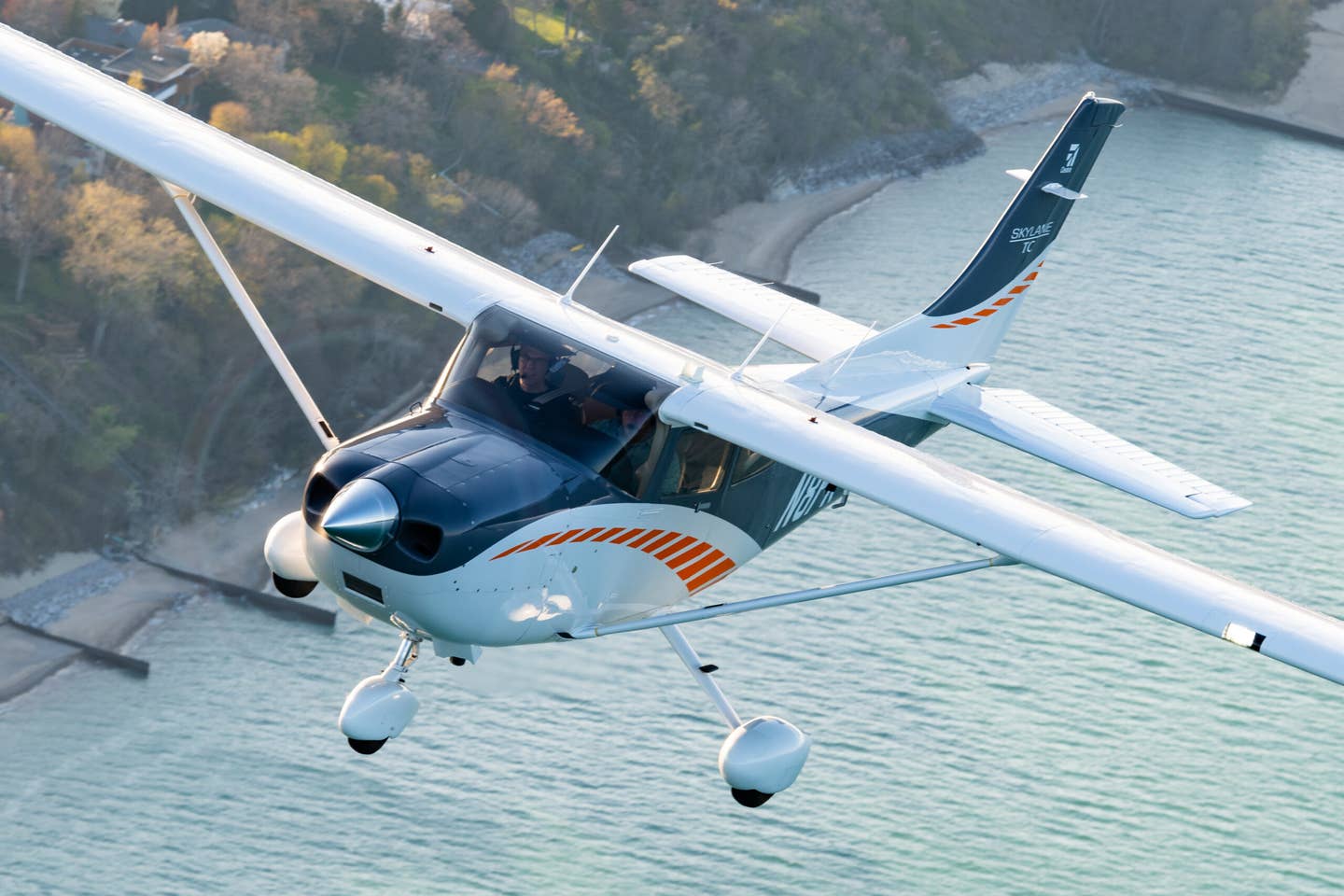
Piper Meridian M500 Piper
Piper announced the latest iteration of its Meridian turboprop single, which it now calls the M500. I'll admit up front that my initial reaction upon hearing the news was this: Whenever a company makes a name change to a product and that new name includes a number (in this case, the number 500) I have to wonder what number is about to come next. OK, end of speculation.
In this case all we know is that the new Meridian is a high-tech gussying up of an underappreciated model that deserves a second look, not just for its noteworthy new features but for its original merits too. Since its introduction a decade and a half ago, the Meridian has made good on its main selling point, that it's the easiest turboprop single for pilots to step up to after flying, say, a Bonanza G36 or a Cessna TTx. The M500 gives a lot more than such fine piston singles without asking anything more of the pilot than the aviator skills a proficient pilot of high-performance singles or light twins is prepared to give.
Piper Meridian M500 at a Glance
At the same time, the airplane has always had shortcomings, and the M500 doesn't address some of the most noteworthy ones. The new edition does, however, give pilots a greatly improved cockpit experience over that of previous Meridians.
One of the main gripes pilots had with the first Meridian was that its cockpit was a hodgepodge of equipment, with the little-known Meggitt Magic EFIS displays anchoring a system of various components from various manufacturers. Meggitt's Magic was to be short-lived. Piper replaced it with the Avidyne Entegra system (with Garmin navigators doing the navcom chores). A few years later Piper settled on the G1000 glass cockpit for the airplane. That G1000 system, which has been continuously updated as Garmin has improved the product, is the foundation of the avionics in the M500. This is good for a number of reasons, chiefly that the implementation of the system, from the physical arrangement of buttons, knobs and switches to the kinds of safety utilities built into the system, is about as perfect as one could hope for.
Meridan Then and Now
In 1999, when Piper introduced the PA-46-500TP Meridian, many thought of it as a Malibu Mirage with a Pratt & Whitney PT6 bolted on. The Mirage, Piper's previous flagship single, is a piston-powered pressurized model that descended from the company's revolutionary Malibu pressurized piston single. Back in the 1980s, the Malibu broke new ground with its high-flying small-cabin performance in an airplane that gave an easy step up for pilots of nonpressurized high-performance singles and light twins.
While the Meridian is the spitting image of the Malibu Mirage, and even though it still bears the PA-46 designation, believe me, it's a lot more airplane. According to Piper, it has limited parts commonality with the original Malibu, with the turboprop boasting an all-new wing, horizontal tail and firewall-forward section, and bigger, beefier flaps, to name just a few key differences.
As different as they are on paper, and they are, it's still hard not to compare the two airplanes, in part because they do look so much alike and in part because their target audiences look so much alike as well. It's not much of a secret that potential customers are successful individuals who want to climb high, go far and go fast while reaping the personal rewards of doing the flying themselves.
Thank goodness, that's not a small market, and it's a motivated one. The move up from the smell of avgas to the aroma of kerosene is a big deal to us pilots, and the Meridian is all about taking that leap and getting the benefits while simultaneously minimizing the costs of turbine ownership.
PT6, Baby!
Clearly, the most distinguishing feature of the Meridian is its 500 shp Pratt & Whitney PT6A-42A turboprop engine. With its vaunted reliability and unmatched field experience, Pratt's segment-defining turboprop gives pilots added peace of mind compared with what you get with a piston engine, which for obvious reasons is a big deal in a single-engine airplane. The jet-A burner also provides a powerful and robust core around which to build more redundant and sophisticated systems, from primary flight controls to flaps to anti-icing boots to the pressurization system. The Meridian is heavy iron done light but done right.
While it provides far greater thrust than the 350 hp Lycoming six-banger in the Mirage, the 500 shp PT6 is a very substantial dialing down of the ubiquitous turboprop's potential power output. Some models of the engine can produce as much as 2,000 shp, four times the juice of the mill in the Meridian. The lower power rating means a few good things for Meridian owners and their net worth.
That economical fuel burn gives the M500 industry-leading economy, with a burn at cruise of just 37 gph, which, coupled with its 170-gallon fuel capacity, gives it a 1,000 nm no-wind range, with reserves.
As with nearly every transportation airplane, that range figure is largely theoretical, because it is based on operating assumptions, full fuel and a light payload that are rarely the case in actual practice. Loading in any turbine airplane is a compromise, and in the Meridian the corridor for compromise is narrower than in most turbines. You can take three skinny people and no bags and fill the tanks with jet-A, true. But if you want to take more people and bags, and that's why you're buying a cabin class airplane in the first place, then you're going to have to leave fuel off and, therefore, not go as far. To state the obvious, the more fuel you leave off, the shorter your range. At some point, the Meridian becomes a shuttle.
As is often the case, the truest explanation is found somewhere in the middle. A typical mission for me — Austin, Texas, to Wichita, Kansas, which is just under 500 miles distant — illustrates the point nicely. In the Meridian, I could take along three FAA-regulation adults and a few bags, leave off 50 gallons of fuel and still make the trip with IFR reserves (under no-wind conditions) at around 250 knots at 25,000 feet in right around two hours. For drivers of high-performance piston singles, those are sexy numbers.
If those figures seem unspectacular from a turbine point of view, you're right — they are. At the same time, however, in the Meridian you can do this in a brand-new airplane for around $2.25 million very nicely equipped. As you'll see in our "M500 vs. the World" section, at this point you can't say that about any other new airplane (at least until Cirrus starts selling its jet).
Meridan in Perspective
After going through initial flight training at SimCom in the Meridian, I've flown the Meridian more than a few hours, though it's been a while. Since the last time I flew it, I've found myself in a few airplanes that some think of as competing against the Meridian. These include the speedy Daher-Socata TBM turboprop single, the do-everything Pilatus PC-12 turboprop single, the speedy but cozy Eclipse 500 twinjet (since supplanted by the model 550) and Cessna's small turbofan twin known as the Mustang. All of them are faster and have better range than the Meridian, but they all cost a lot more too. The truth is, though, in terms of price point and number and type of engines, the Meridian doesn't have any real competitors in the new-airplane marketplace.
Regardless, over time I'd come to think of the Meridian as an airplane that, because of its limited payload and range, falls short of where it should be. The truth, however, is subtler than that. The Meridian is an airplane that, despite its shortcomings, has some strengths that make it a desirable airplane for many pilots looking for more in terms of performance but not much more in terms of cost and complexity.
Flying the M500
It was still pretty early on a late winter morning in Vero Beach, Florida, home to Piper Aircraft, and we'd already returned from a photo flight on which I'd had 90 minutes to stare through my camera's lens at the sleek lines of the M500. I couldn't have been more eager to go flying in it.
My companion for the flight that morning was Piper's longtime flight test pilot Bart Jones, who'd also flown the airplane for the photo shoot earlier. We walked around the airplane in the low morning sun, and Bart pointed out the many significant differences between the Mirage and the M500, including a number of bigger, stronger and more redundant systems that included the fuel system, flaps, gear and vertical empennage.
Apart from the pretty new paint scheme, the upgrades to the airplane were all inside the cockpit.
If you're used to flying light singles and twins, Cirrus SR22s to Barons, for instance, the M500 will feel like a real step up. The airstair door is the first hint of that. Like everything else on the M500, it's been done right, with the appeal and convenience of a high-end portal but without any notable complexity. The back four seats, laid out in a club configuration, are comfortable enough and a step up from even nice piston-level club style six-seaters, from the Saratoga to the Beechcraft G36. The cabin of the M500 won't remind you of any Gulfstream, however. Still, it's a nicely appointed and comfortable seating area, a real step up from the piston world.
From the get-go, there are noticeable changes to the panel, which features a trio of Garmin flat panels, including a 12-inch center MFD. A bright and detailed Aspen display has been added on the far left side as the dedicated standby instrument. The flight control (autopilot) panel has been moved up; a single audio panel is situated below the MFD. Start-up is easy, though the turboprop world has yet to get full-authority digital engine controls, like fadec. Still, spin the turbine, introduce fuel and monitor the start, and you're good to go. We taxied out.
Because there's no fadec, you need to add in power carefully for takeoff while monitoring the engine gauges to avoid overdoing it. Unless you've flown old-fashioned, turbocharged piston airplanes, the skill of adding power on takeoff will be a new one, a little like rubbing your belly while patting your head.
Climb-out is impressive by little airplane standards. We selected 145 knots and saw a rate of climb of around 1,300 fpm on the standard day — we were light, around 4,500 pounds, with just me and my notepad and pen, Bart and about half-tanks of jet-A.
I was soon reminded of just how pleasant an airplane the M500 is to fly. The controls are just right for an airplane of this class, solid and predictable but not too heavy. There weren't going to be any surprises on the M500. It's a mature product with well-known performance characteristics. We climbed to 15,500 feet to try out the new envelope protection system (Garmin's ESP).
Big Deal
Before I had a chance to wonder what the new designation M500 really meant, I'd been clued into the changes to the new model. These amounted to an extensive set of upgrades to the G1000 avionics suite and other systems, all of them adding considerable value in the form of enhanced safety, ease of operation, added redundancy or some combination thereof, and without adding much to the price of the airplane.
The marquee attraction of the avionics upgrade is Garmin's remarkable envelope protection utility, ESP (Enhanced Stability Protection). ESP is a passive system; that is, it operates in the background, watching the airplane's performance and taking action only when the pilot begins to stray outside the airplane's normal operating parameters. With ESP, the autopilot is, in practice, always on, even when it's turned off. At those times, it operates in the background with limited but critical functionality.
Nudge is a word that Piper uses to discuss the technology, presumably because the message is that the pilot is still the one in control and only gets a tap on the shoulder when needed. It's a pretty good characterization of ESP. For instance, ESP's overspeed protection keeps the pilot, when commanding a descent, from inadvertently letting the airspeed gallop past the red line, raising the nose slightly. Likewise, if you start to bank too sharply, ESP will, up to a point, put some artificial resistance into the ailerons, making it noticeably harder to maintain that bank angle.
On my demo flight, Bart and I explored every part of ESP, and it worked great. I banked hard and felt the system add in resistance to my input. I tried stalling the airplane and watched ESP alert me to the error of my ways while automatically keeping us just barely flying along — the M500 handles great at slow speeds, by the way.
Another important improvement for the M500 is coupled go-around capability, which is possible because of ESP's underspeed protection function. Like the overspeed protection, it keeps the airplane from stalling by softly nudging the nose forward to keep the airplane flying just above stall speed. This protection is great for level-off errors, in which the pilot forgets to add in power after leveling off from an autopilot descent at the selected altitude. Underspeed protection allows an autopilot-flown go-around because it keeps the airplane from stalling should the pilot forget to add in power when initiating the go-around procedure.
We put the coupled go-around to the test, letting the Garmin GFC 700 fly ILS to Runway 10R at nearby Fort Pierce. After descending to simulated minimums, I hit the go-around button on the side of the power lever, added power, cleaned up the airplane and let the autopilot fly the missed, including entering the hold. It's just one more safety feature to help the pilot during a busy and high-risk phase of flight.
Other upgrades include ADS-B In and Out standard, a 3-D audio panel, the autopilot controller relocated to the top of the panel, where it should be, and pressurization integrated into the G1000 system — all the pilot need do is enter the destination airport, and the system does the rest. Nice.
And don't forget the new blue button on the panel, a panic button of sorts. If for whatever reason the airplane gets out of whack attitudinally, like a badly behaved teenager, all the pilot has to do is push the blue button and the autopilot sets things right. One might quibble about the usefulness of such a button — if the pilot has screwed up so badly the airplane gets to the point where such a button needs to pushed, well, there are likely bigger problems behind it. Then again, maybe a last resort button is exactly what is needed in such an instance. Besides, it's hard to find a downside to it.
On the M500 I tried it out, getting the airplane nose up, uncoordinated and slow. A touch of the blue button and a touch of power meant all was right, and right side up, in the world.
After the missed at Fort Pierce we returned to a pattern at Vero all abuzz with training traffic, entering the right downwind for 12R. In the pattern the M500 is easy and predictable. The numbers, in fact, are just a touch faster than in my SR22, and the touchdown characteristics are similar, though the long gear of the Meridian makes it seem as though you're a little high when it's time to flare. You're not. Touchdown, a little beta, and you're done. The M500 is an airplane that, in the hands of a familiar pilot, needs precious little runway, another plus to the lightest turboprop single.
I’m sure there are things that Piper could do to the M500 to make it an even better airplane, but short of adding range and payload, which would require a complete engineering redesign and add a lot to the retail price, I can’t imagine what those things are. The airplane remains that perfect turboprop for pilots transitioning from the piston world, providing a range of transportation capabilities that fit not only their personal and business needs but their piloting skills too, and offering a lot of extra capability but without a lot of additional cost or complexity.

Sign-up for newsletters & special offers!
Get the latest FLYING stories & special offers delivered directly to your inbox






